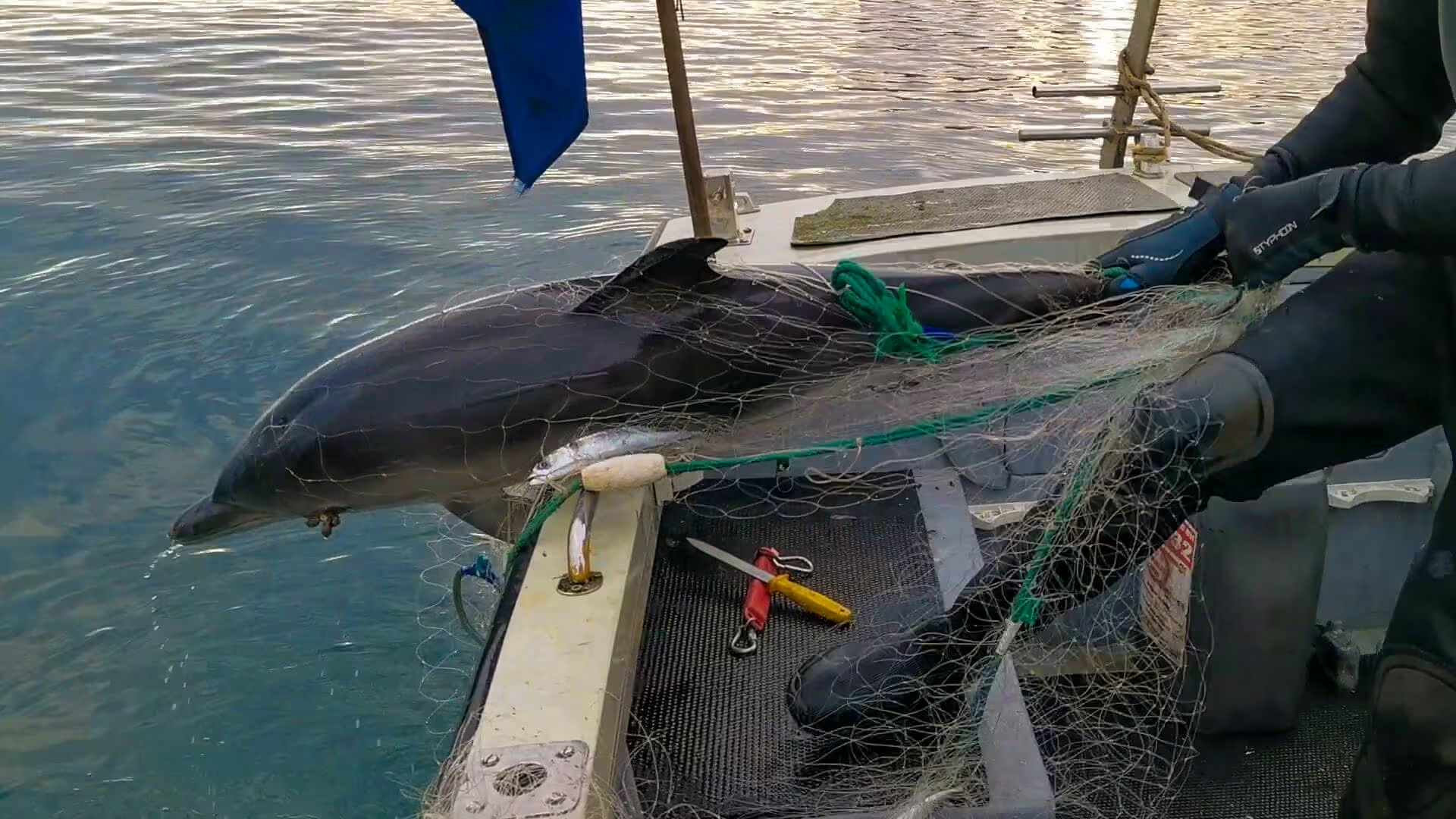The Problem
If you're reading this, you're likely aware of the devastating impact debris—particularly plastic—is having on our oceans. The scale of the problem is staggering, and its effects on marine ecosystems are becoming increasingly visible to those of us who explore beneath the waves.
Our dependence on plastic has become deeply entrenched in modern life. Whilst there's still money to be made from fossil fuels and hefty profits expected by multinational corporations, plastic isn't disappearing any time soon. The convenience it offers comes at an enormous environmental cost.
Ghost fishing gear, also known as ALDFG (Abandoned, Lost, or Otherwise Discarded Fishing Gear), presents an equally serious but less publicised threat. These abandoned nets, lines, and traps continue to catch and kill marine life long after they've been lost or discarded. I won't delve into the full extent of the problem here—a quick search will reveal the sobering statistics—but it's a crisis that demands our immediate attention.
Why Data Is Important
Simply put, we cannot act effectively without data. Consider this: our eyes constantly send data to our brains, enabling us to perform even the simplest tasks. Have you ever tried walking down stairs with your eyes closed? The result illustrates perfectly why information is crucial for action.
The same principle applies to ocean conservation. We wouldn't organise a beach clean-up without first knowing there's rubbish to collect. Someone, at some point, surveyed that beach—perhaps informally, but they gathered the necessary data to justify action.
Policies and Citizen Science
For governments and environmental authorities to make informed decisions and implement effective policies, they need robust evidence—data. Traditional data collection in marine environments is expensive, particularly in areas that are difficult to access. Organisations like the NOC and NOAA invest millions (possibly billions) developing sophisticated sensors and autonomous submarines to collect oceanic data.
This is where citizen science becomes invaluable. It's significantly more cost-effective and is increasingly playing a vital role in marine conservation efforts. Every diver can become a data collector, contributing to a global understanding of our ocean's health.
We Are All Responsible
Let's be honest: if you use plastic, there's a reasonable chance some of it has ended up in the ocean. Unlike organic materials, plastic doesn't biodegrade—it merely breaks into smaller pieces, creating microplastics that persist indefinitely, affecting marine ecosystems for generations.
Many of us enjoy seafood caught from our oceans. The equipment used to catch these fish frequently gets snagged on the seabed and abandoned. But here's the tragic reality: it doesn't stop fishing. Marine animals continue to be caught in these ghost nets, suffering slow, painful deaths. It's a cycle of destruction that continues silently beneath the waves.
Divers Can and Should Help
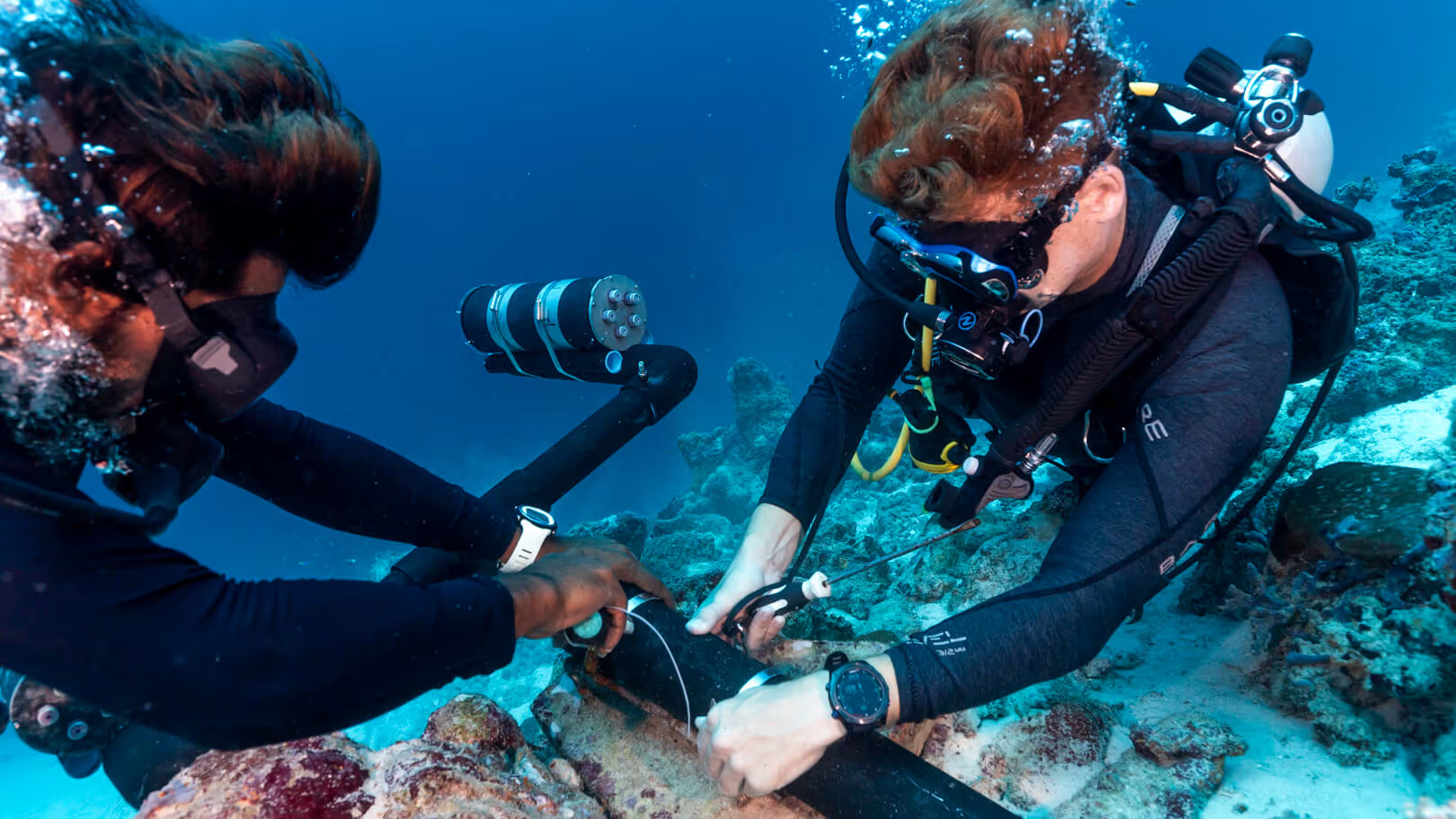
Photo by Nathan Perisic
As divers, we have a unique perspective that land-dwellers simply don't possess. We witness first-hand the debris, the abandoned fishing gear, the bleached coral, and the depleted reefs. We see what others cannot.
We literally risk our lives every time we descend into this alien world. There must be a profound connection drawing us back—a love for the ocean that transcends the inherent dangers.
Most divers want to help but feel overwhelmed by the scale of the problem. "What difference does picking up a single plastic bag make in an ocean full of rubbish?" It's a fair question with a powerful answer.
There are approximately 6 million active divers worldwide. If just 10% of us collected one piece of debris on every dive, or shared data about what we observe, the cumulative impact would be tremendous. Small actions, multiplied across our global community, create significant change.
Clean-up Organisations
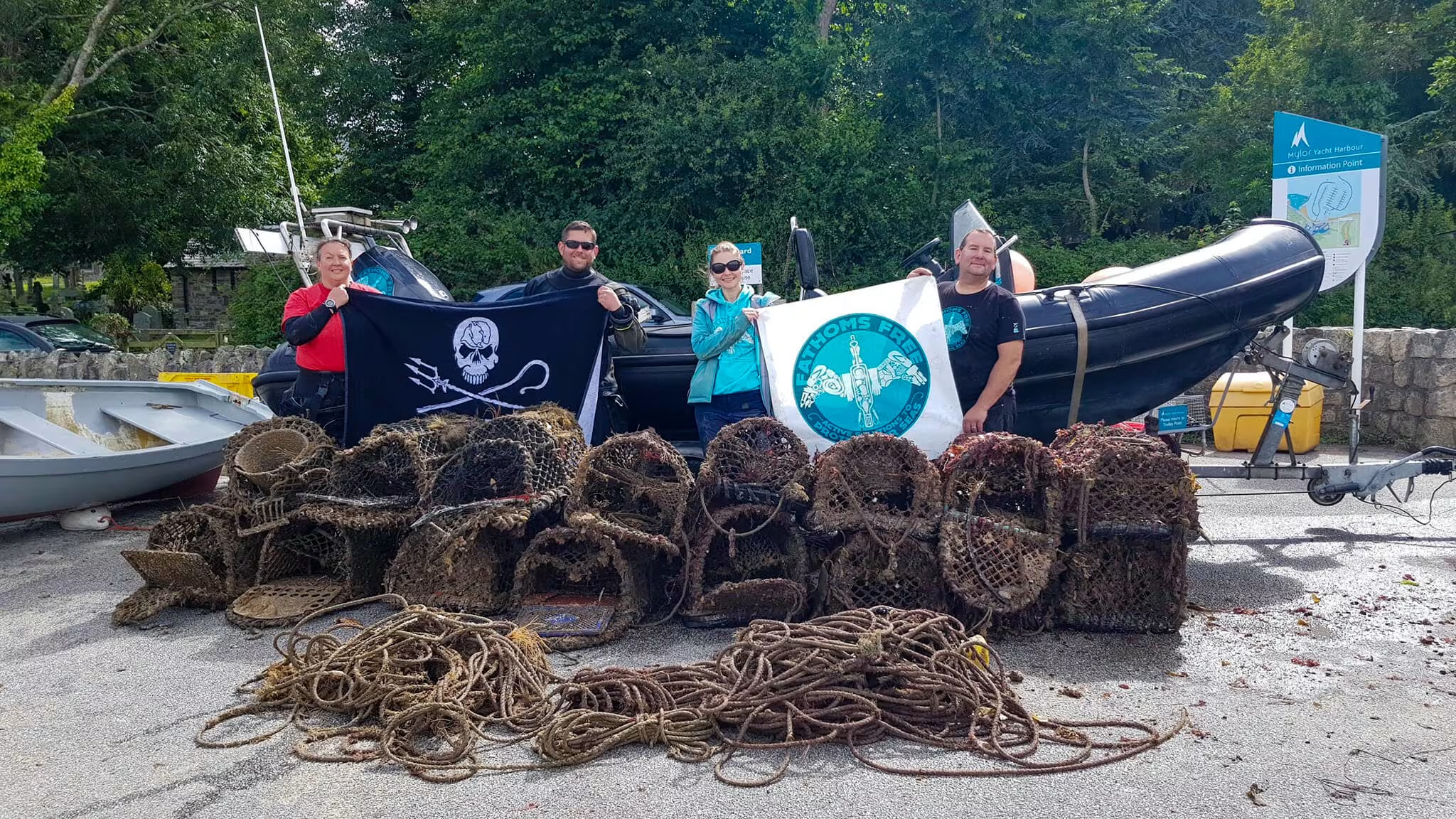
Photo by Fathoms free
Hundreds, if not thousands, of organisations worldwide are dedicated to clearing our oceans of debris. Most operate as NGOs (Non-Governmental Organisations) or charities, meaning their funds and workforce are limited.
Like all effective operations, they need data to prioritise their efforts and deploy resources efficiently. Whilst they can collect data themselves, this requires precious time and money—resources that could be better spent on actual clean-up operations.
What if we divers could collect this data, package it effectively, and deliver it to these organisations in less than a minute? That's exactly what we've built.
I'm a Diver, How Can I Report Ghost Fishing Gear?
Many ghost gear removal organisations have websites with forms for reporting debris or fishing gear. However, this approach has significant limitations: divers must actively seek out these websites, navigate different forms for different organisations, and accurately describe debris locations—often from memory. We've spoken with several organisations who confirm these forms are rarely used, and when they are, the information provided often lacks the detail needed for effective action.
Scuba Network has developed an integrated solution, built directly into our dive log, minimising effort for divers whilst maximising the chances that reported debris actually gets recovered:
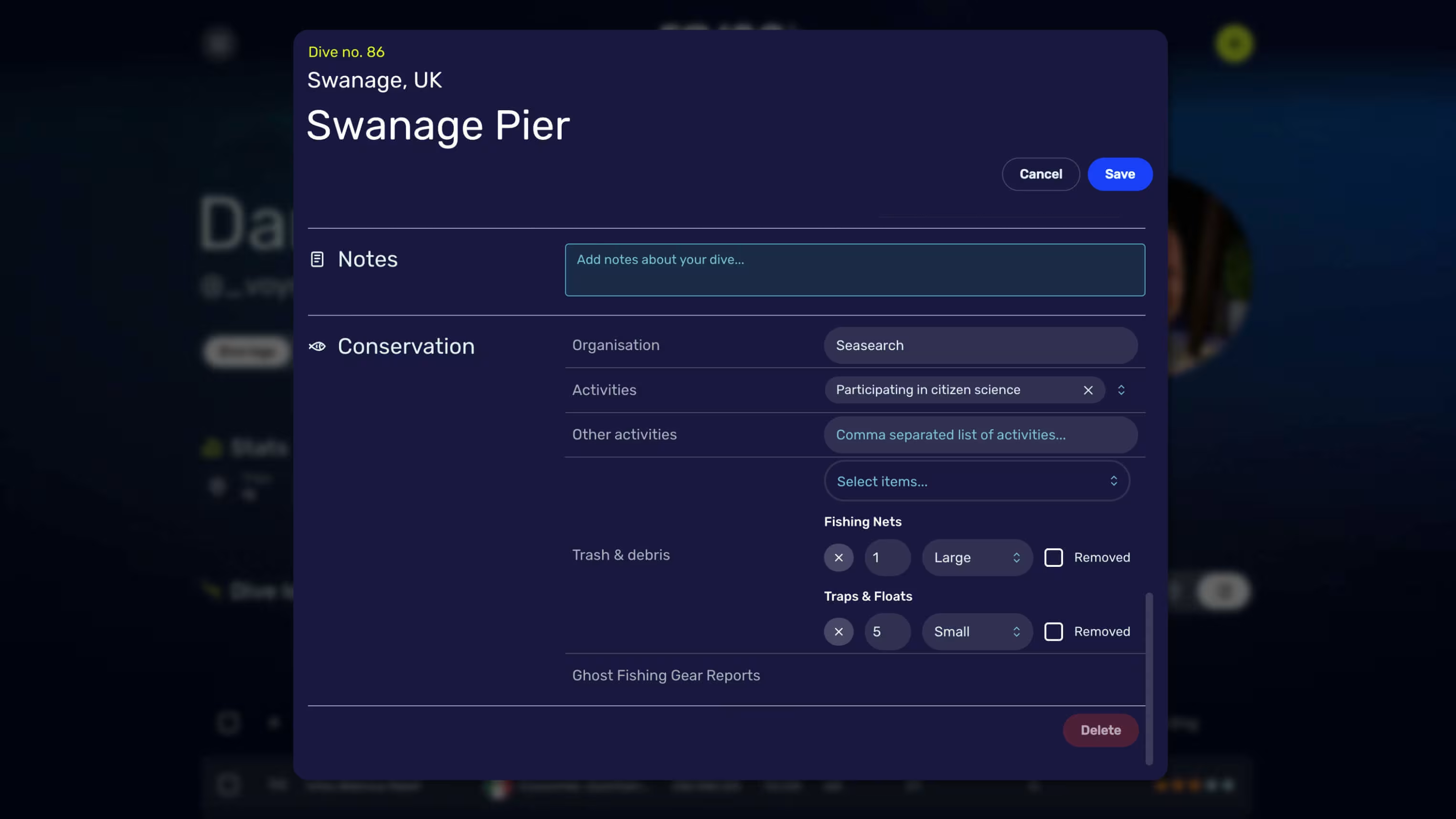
- Sign up or log in to Scuba Network (if you haven't already)
-
Log your dive:
- Complete as much information as possible—this will be attached to your report
- Upload photos—these will be included in the report and help with:
- Locating the debris/fishing gear
- Understanding the scale and urgency of the problem
- Log the items spotted, including approximate quantity and size
- Saving your dive automatically triggers the reporting form
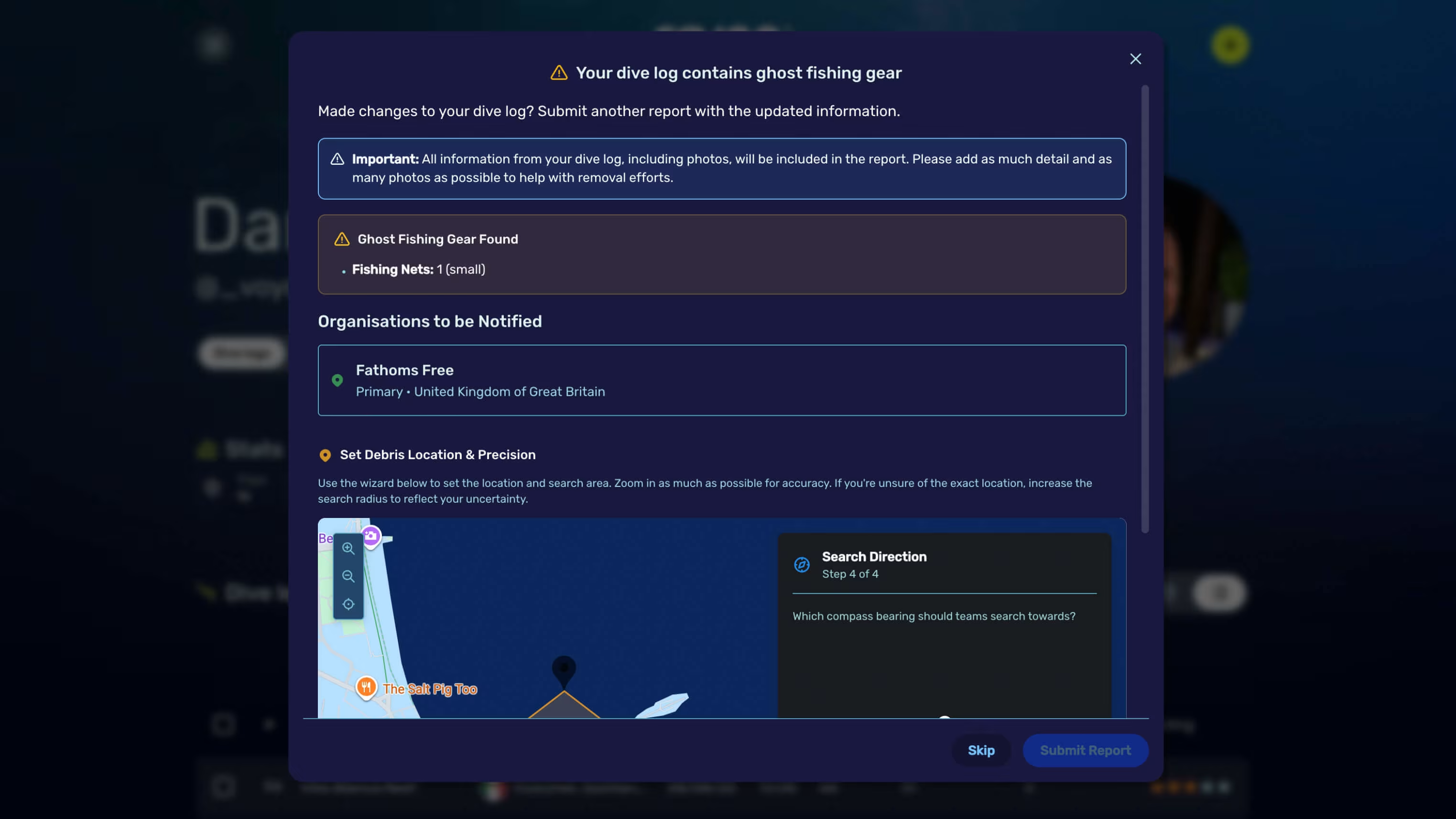
A diver's underwater navigation skills, combined with numerous other factors, influence their ability to accurately record debris positions. GPS doesn't work underwater, so you can't simply take a coordinate reading.
We've created a location precision wizard to address this challenge:
- Set coordinates or drag the pin as accurately as possible (this triggers a geospatial search in our database to locate relevant removal organisations)
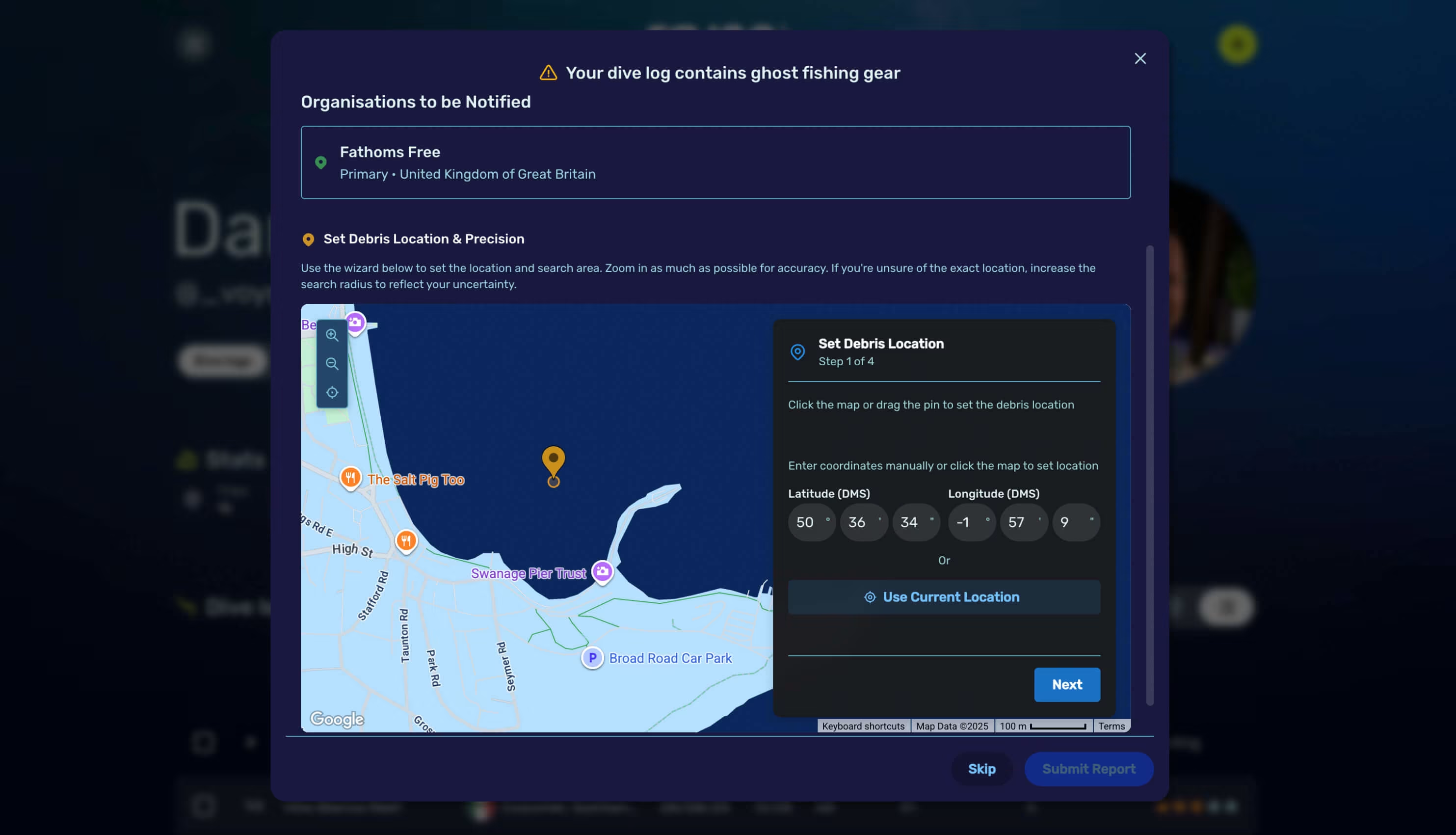
- Increase or decrease the search radius based on your confidence level
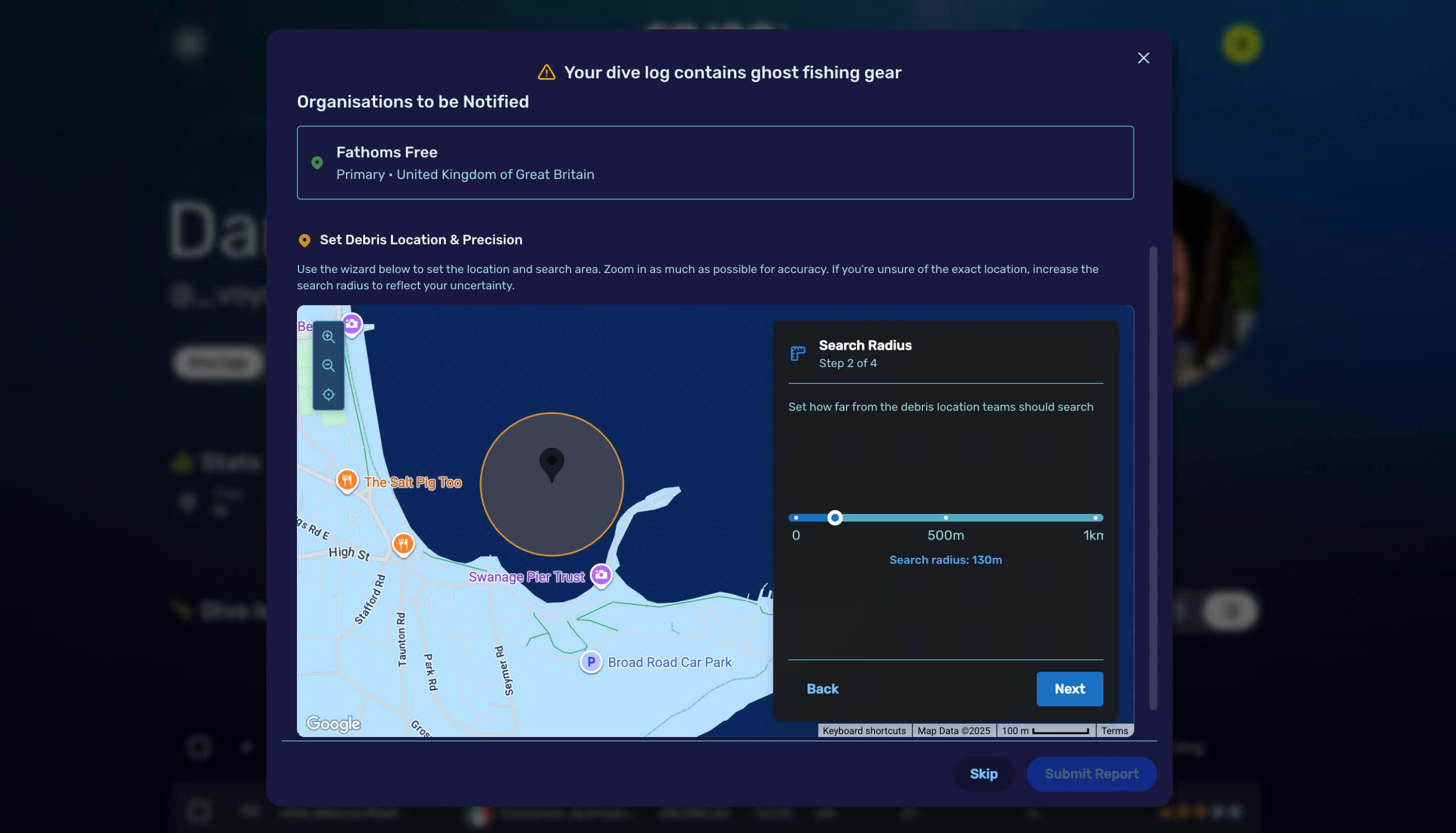
- Adjust the search angle to narrow the area
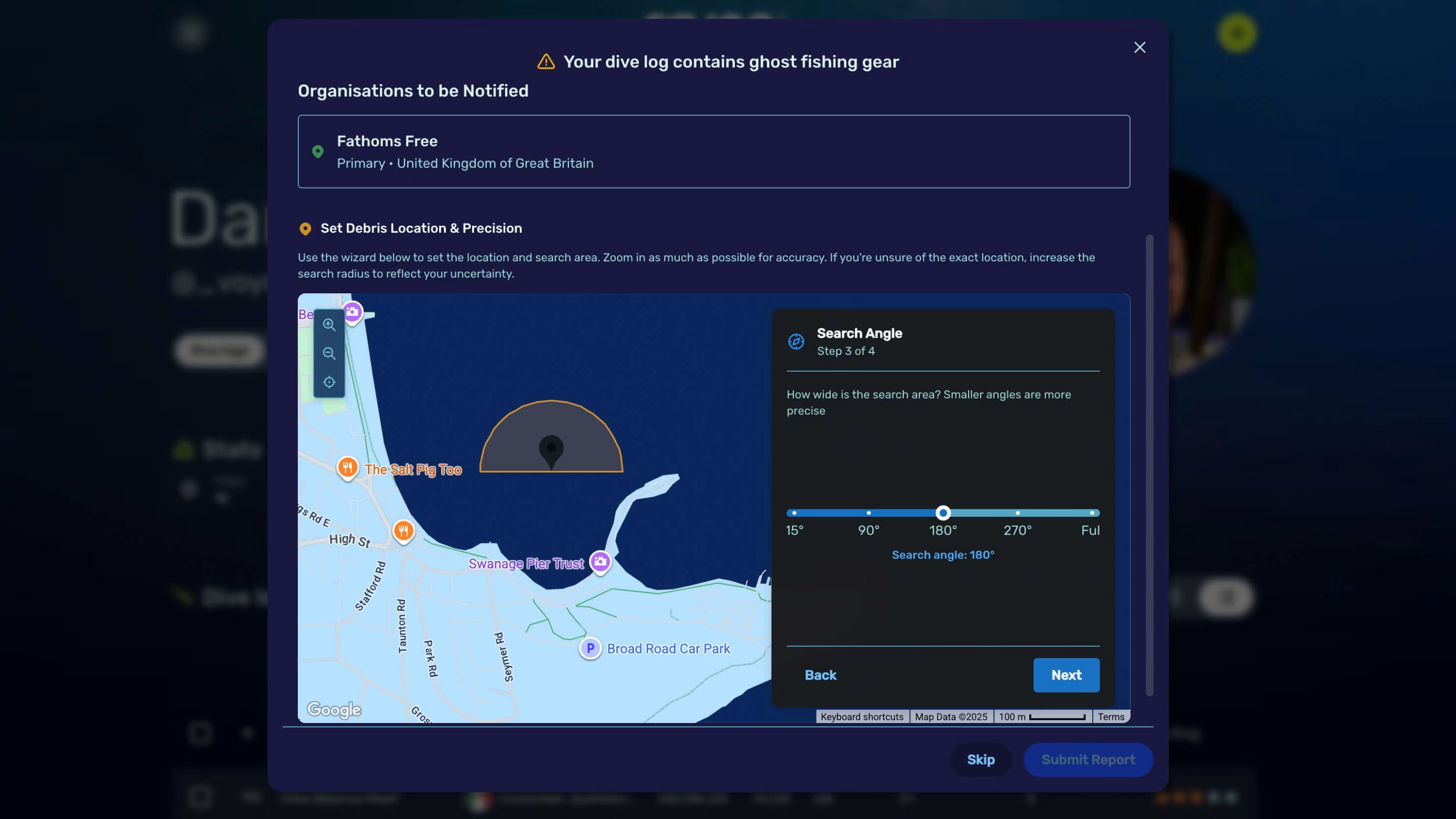
- Adjust the search direction for maximum precision
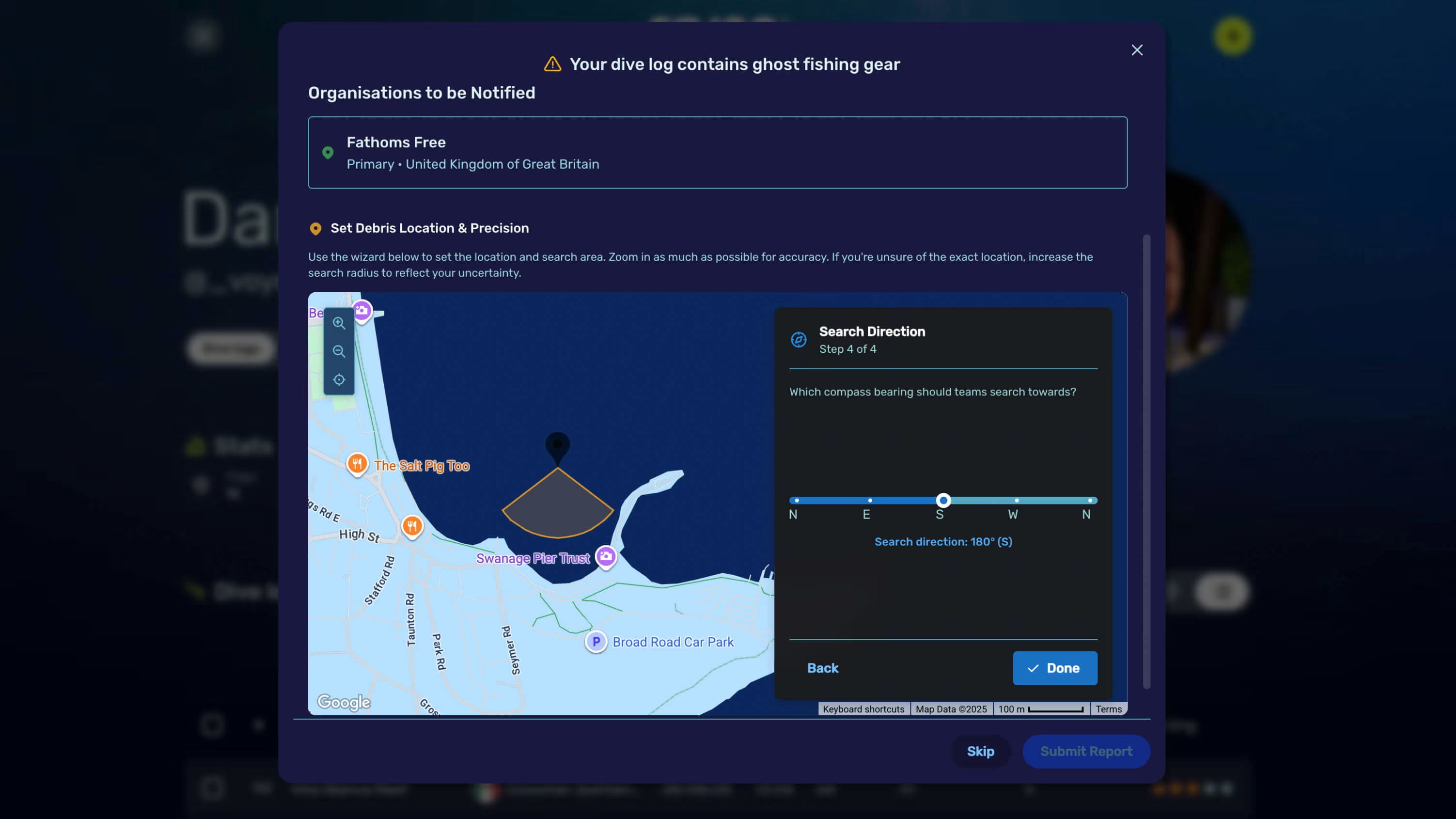
- Review and make final adjustments
Once submitted, if the report coordinates fall within a geospatial boundary specified by a registered ghost gear removal organisation, they'll automatically receive a copy by email.
Your report will also appear on our interactive map, visible to all users:
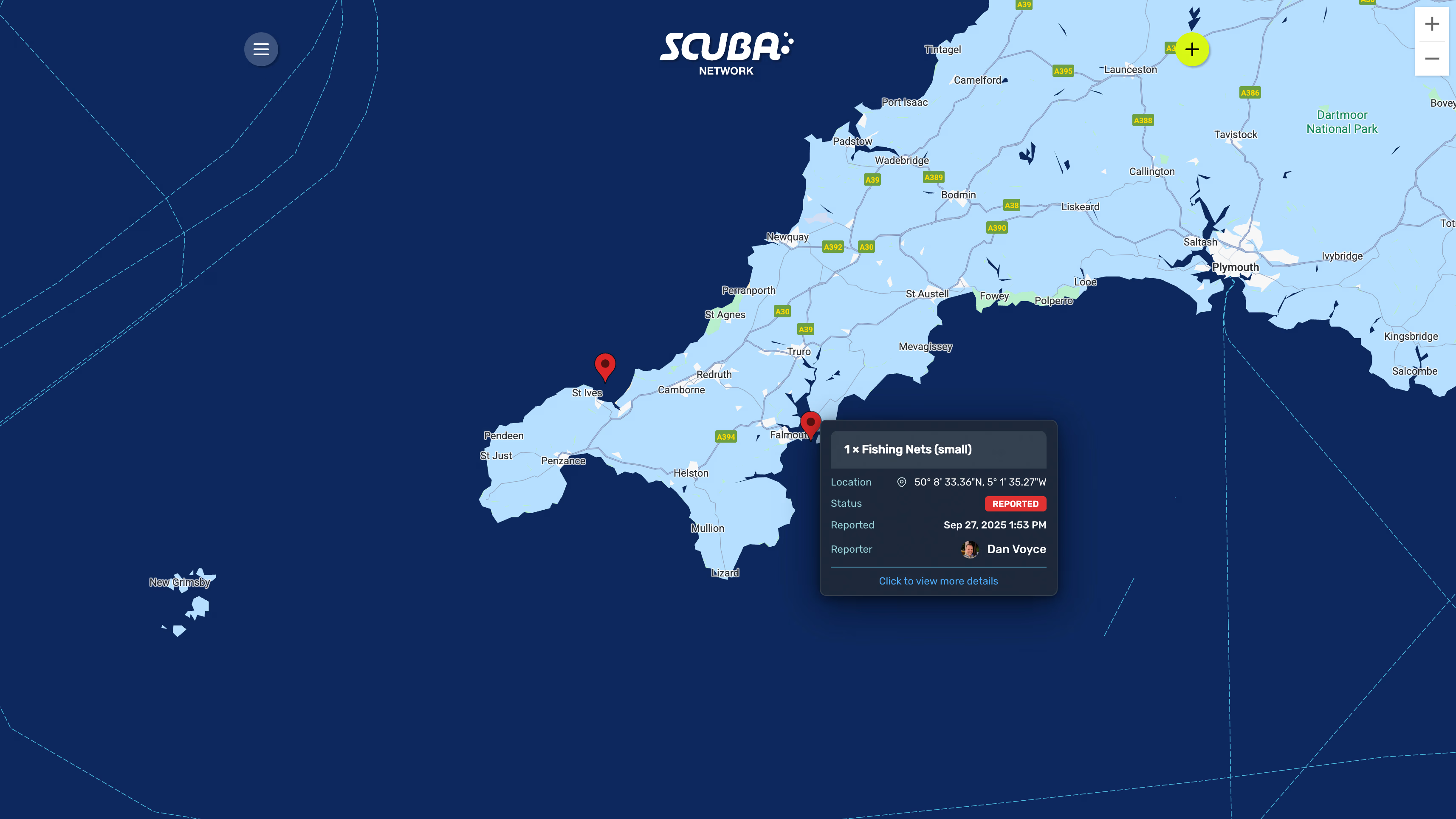
Sometimes the initial search area might be too vast to justify deploying a specialist recovery team. In these cases, recreational divers can use the report to conduct their own searches, progressively refining the location. Think of it as a treasure hunt—except we're saving the treasure, not taking it.
I'm a Ghost Fishing Gear (ALDFG) Removal Organisation, How Can I Receive Reports?
- Sign up or log in to Scuba Network
- Add your organisation (if it hasn't been added already)
- Request admin access (currently a manual process—email us and we'll verify your connection to the organisation)
- Define your operational areas by drawing geospatial boundaries on the map
- Enter the email address where you'd like reports for each location sent
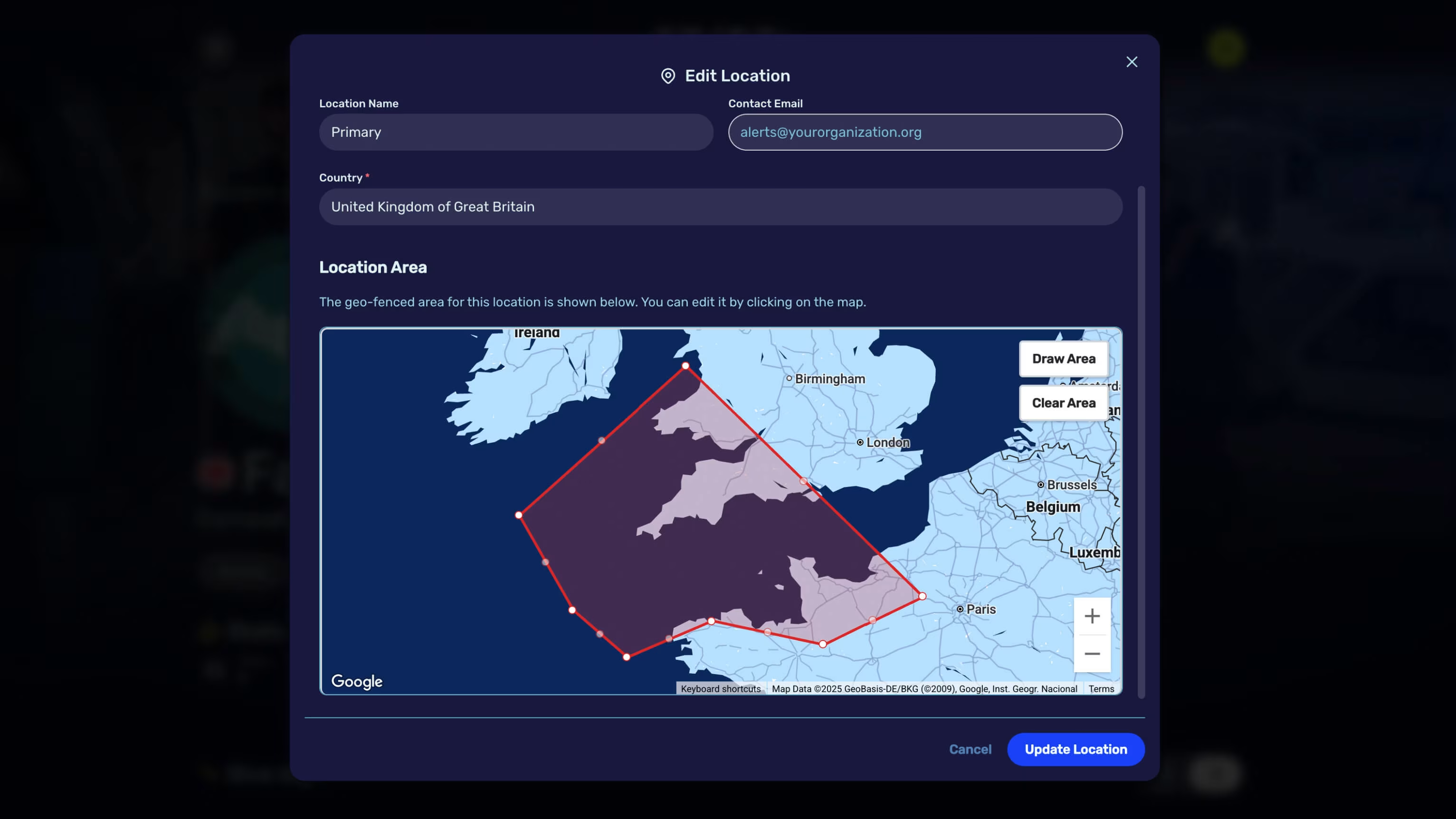
Next Steps
Feedback and Improvements
Like all new technology, there's room for improvement. We welcome feedback and suggestions from both divers and organisations. We'll consolidate all input and iterate to ensure the tool remains user-friendly and maximally effective for both people and marine life.
Data, Data, Data!
We need to measure this tool's impact. This helps us determine whether to invest additional resources whilst contributing to the broader evidence base that drives meaningful policy change.
When ghost fishing gear is recovered, removal teams count all affected animals—fish, crustaceans, mammals, and birds—recording whether they were found dead or alive. Currently, this valuable data typically languishes in spreadsheets on someone's hard drive, never contributing to the bigger picture.
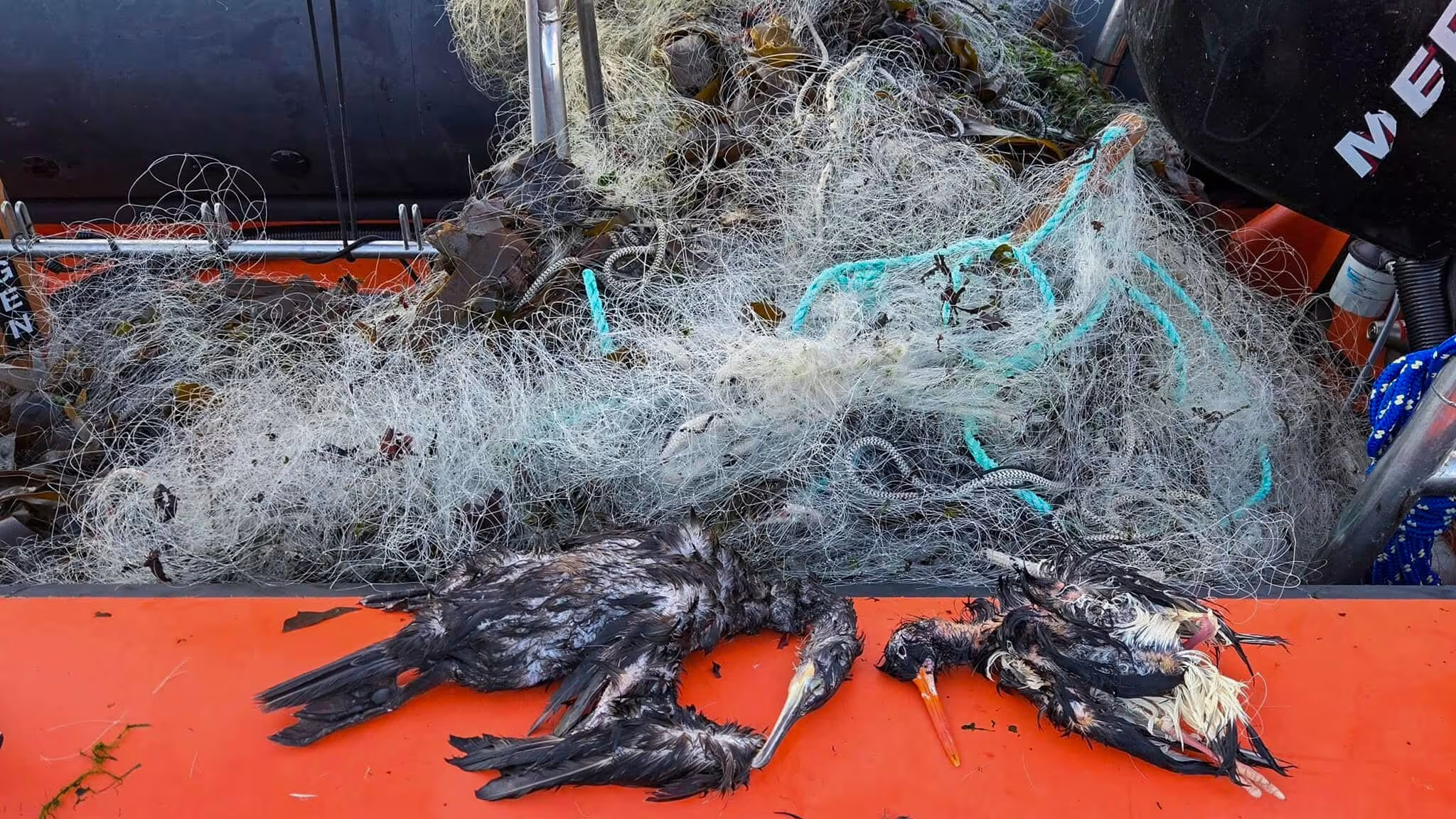
Photo by Fathoms free
Soon, we'll enable organisations to save this recovery data directly on Scuba Network, linking it to specific reports. We can then notify the original reporters, showing them their efforts made a real difference. This creates a feedback loop that encourages continued participation whilst building robust evidence about the scale of the ghost gear problem—evidence that can drive action at governmental and international levels.
